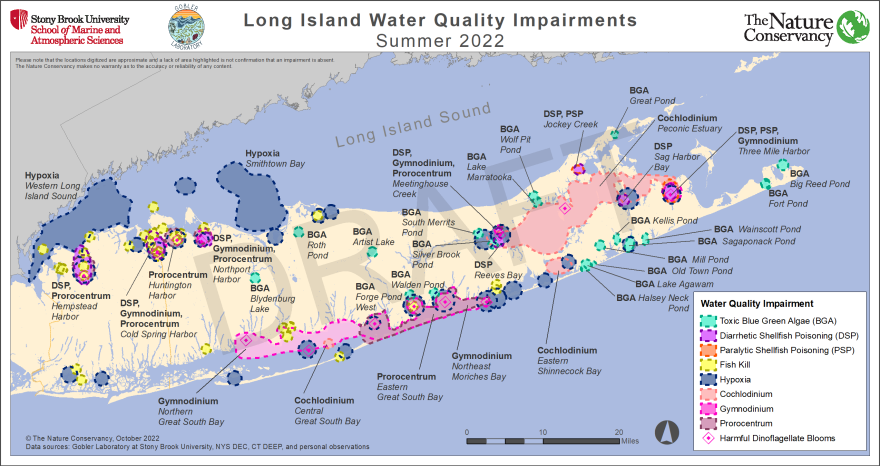Record Fish Kills Reported in Long Island Waters

A record 50 fish kills — well above the average of five annually — were recorded this summer in waterways around Long Island, according to a Stony Brook University study released on October 13.
The fish kills were caused by rising water temperatures and nitrogen pollution causing excess algae blooms that suffocate other marine life, experts said. The report identified 30 dead zones, 20 toxic blue green algae blooms, and a new, marine-harmful algae bloom that has proven especially deadly.
“In some cases it was the traditional actors,” Chris Gobler, a professor at the Stony Brook University School of Marine and Atmospheric Sciences, told reporters during a news conference. “We had something called rust tide for example on the East End. But in unfortunate and disturbing news, we had a new type of marine-harmful algae bloom on the South Shore throughout all of Great South Bay and Moriches Bay … called Gymnodinium.”
The bloom was also found in Three Mile Harbor in East Hampton and Meeting House Creek in Aquebogue. News of the findings coincided with a newly released report by the U.S. Environmental Protection Agency that links home values on Long Island to water quality, with some areas reducing home values by up to $30,000.
Environmentalists hope the Stony Brook assessment and map will be a useful tool that will help policymakers create a successful plan to improve water quality, specifically in the worst areas and prevent potential toxins — mainly nitrogen from cesspools and rainwater runoff— from entering water systems.



